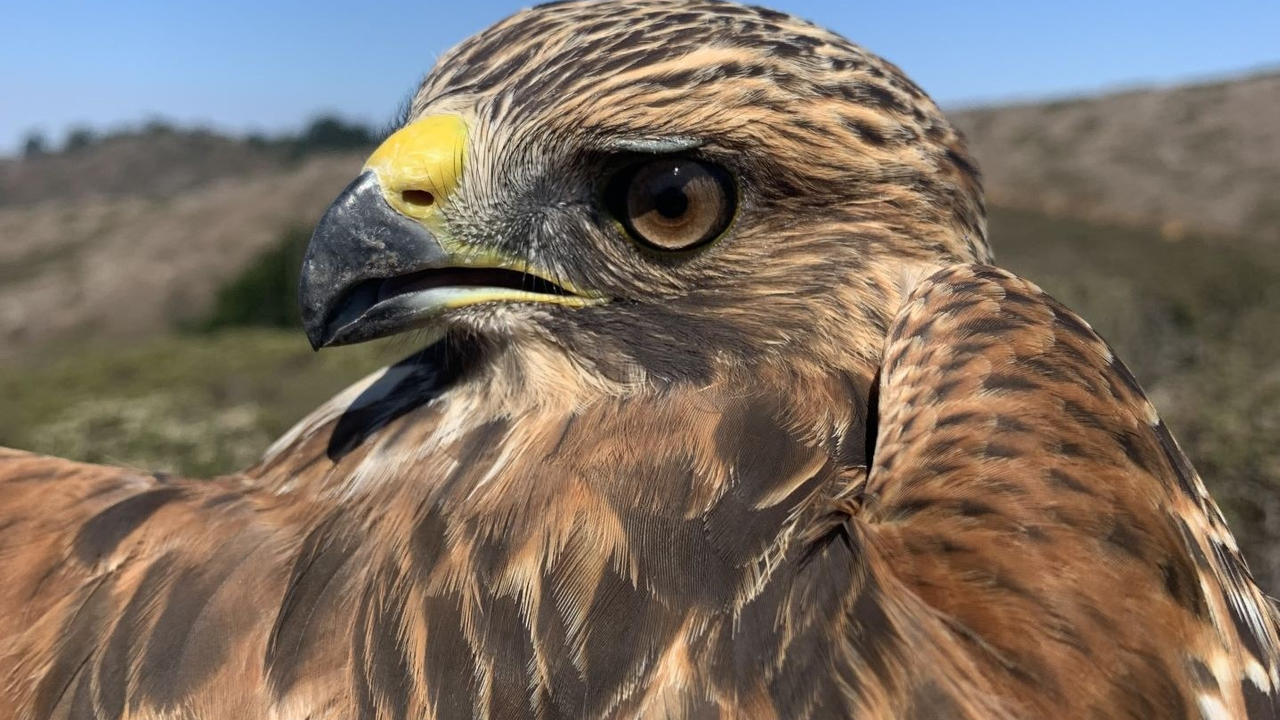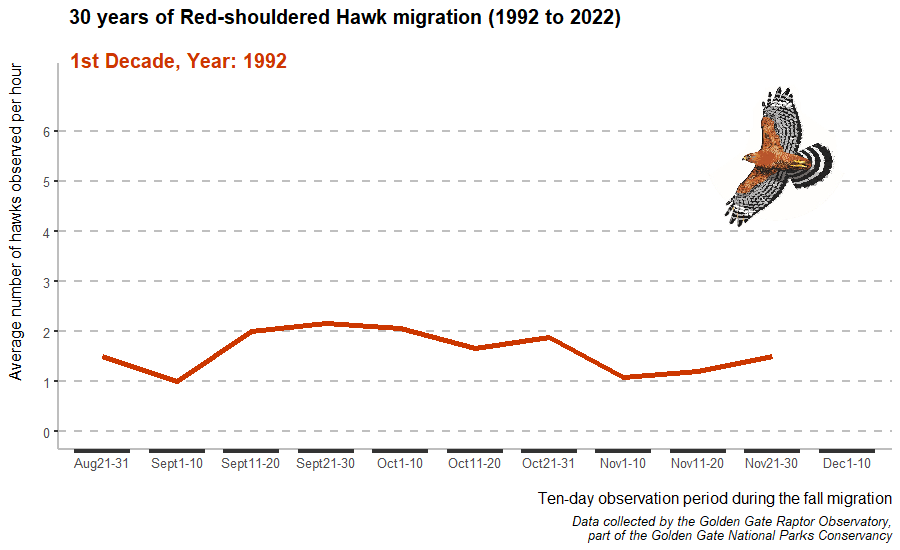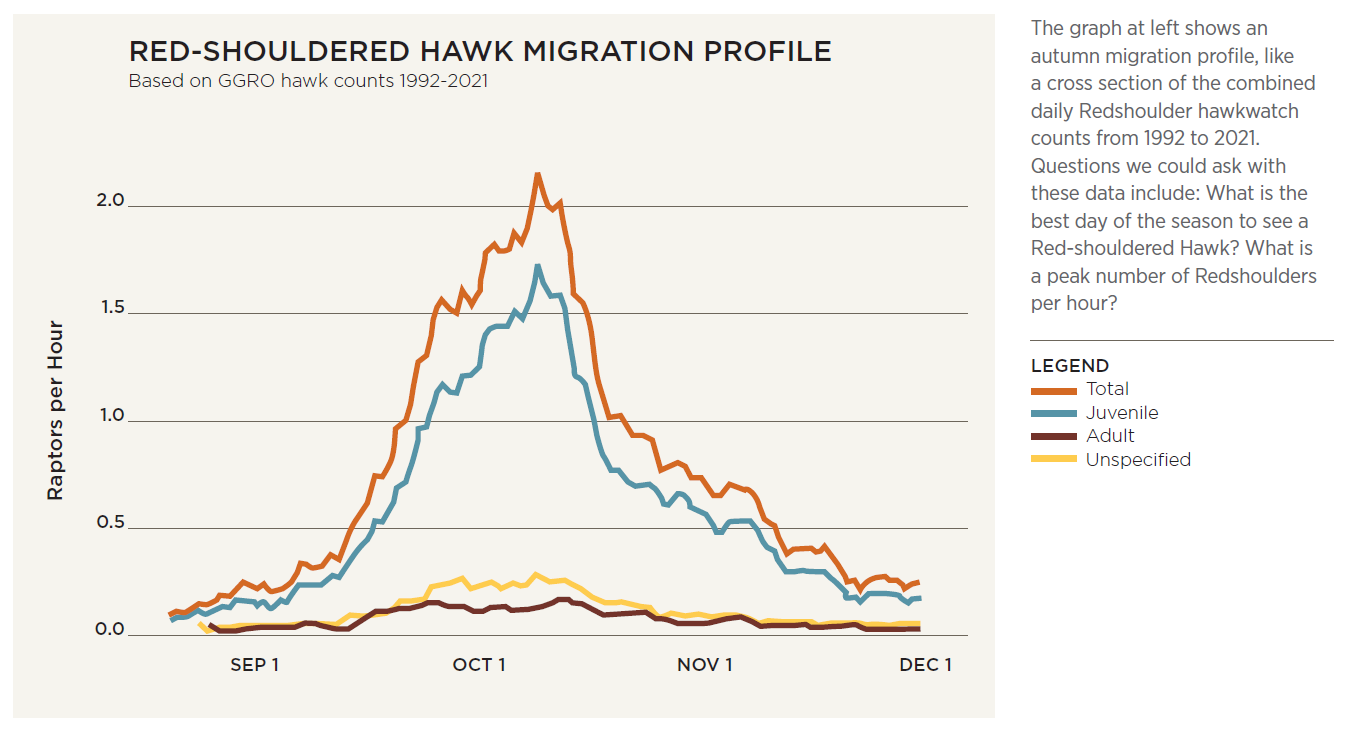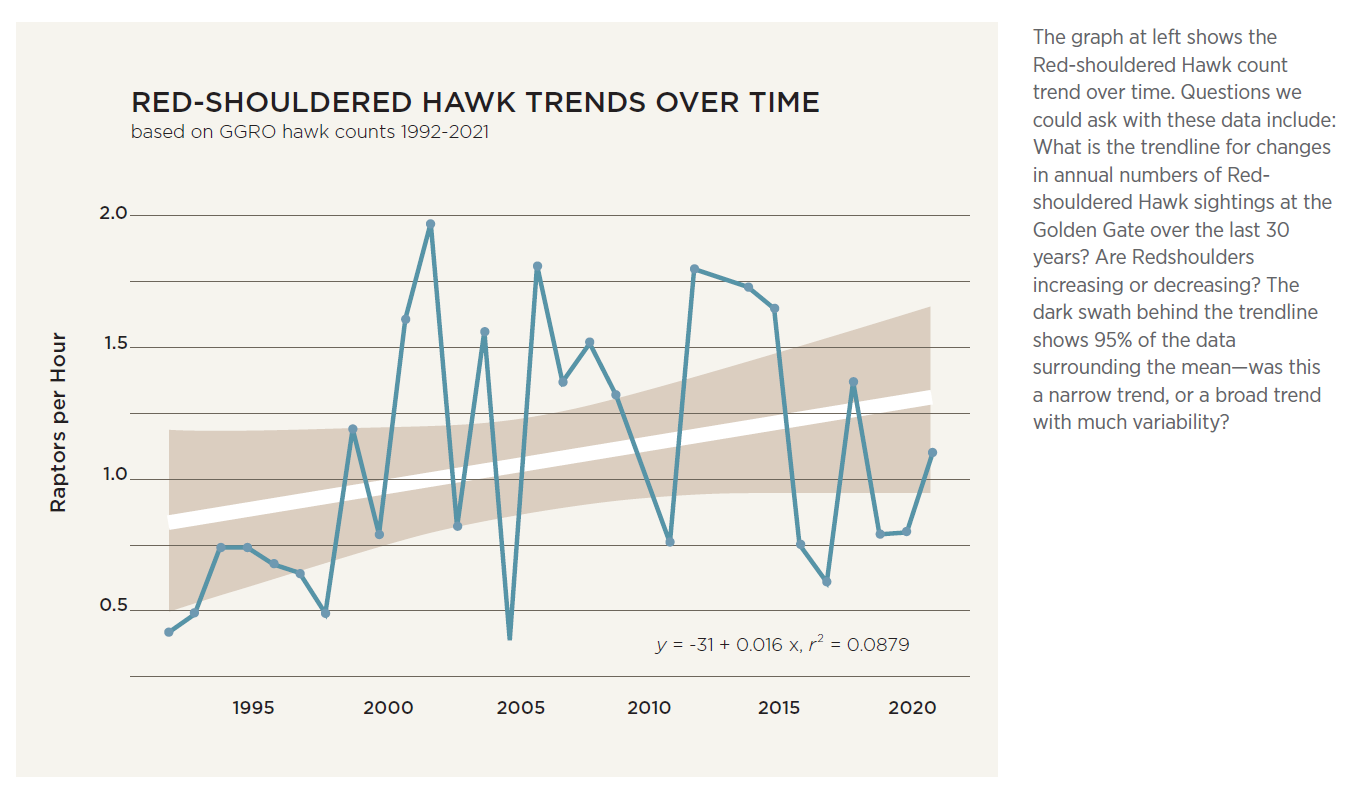The above animation displays 30 years of Red-shouldered Hawk counts at the Marin Headlands, year by year from 1992 to 2021. As you watch the years scroll by–and you might need to do this more than once–watch for a few things:
- For each year, how does the maximum rate change (peak Red-shouldered Hawks counted per hour)?
- Is there one peak or are there multiple peaks, or no peak at all?
- Are there a general trends over the 30 years that you can detect, such as lower or higher peaks over time, or peaks occurring earlier or later in the year?
Refresh the page to run the animation again.
Measuring a Migration
How do you measure something as complex and as far-reaching as the Pacific Flyway, the name we give to the huge geography stretching from Alaska to Patagonia where raptor migration is observed? Banding, hawkwatching, radio tracking, and satellite tracking each provides a different and imperfect measure of raptor migration. Data from each method provide us with important clues for seeing the big picture—and for detecting change. See the graphs below for some of the Reshoulder facts that can be learned from hawkwatching. See our 2021 Pacific Raptor report (coming soon!) for examples of what can be learned from banding.




